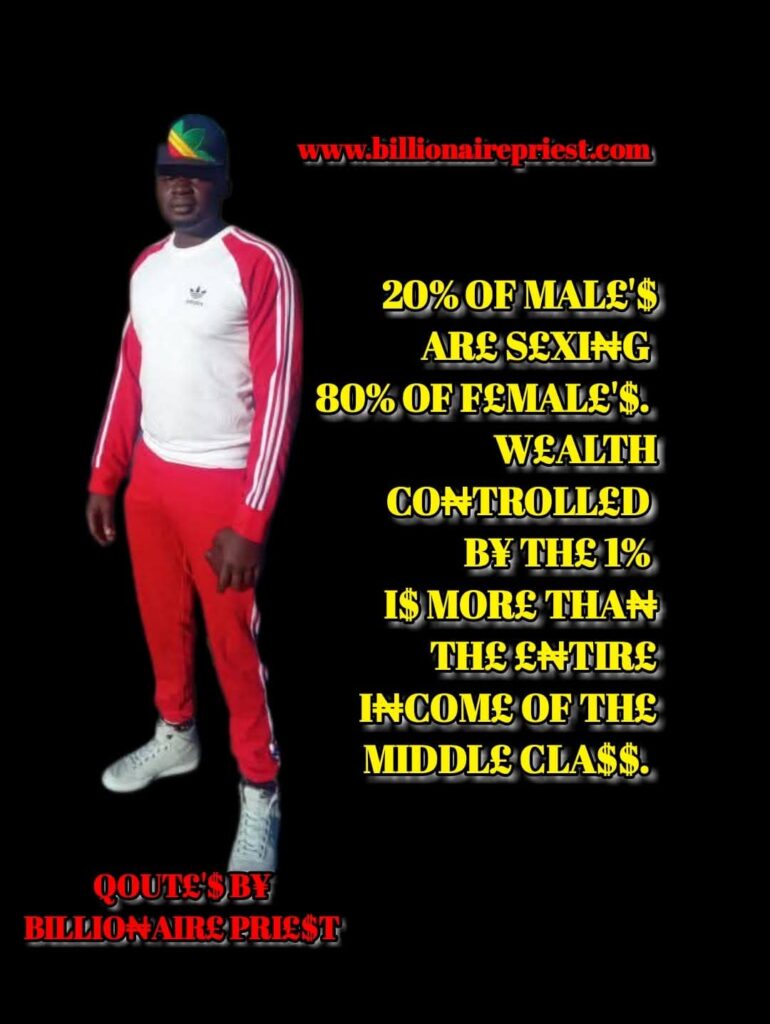Sexual Dynamics: The 80/20 Rule One common observation in social dynamics is that a small percentage of men (often cited as 20%) tend to engage in sexual relationships with a large percentage of women (around 80%). This phenomenon can be understood through several factors: A. Social and Cultural Influences: Attraction and Social Status: Men who possess traits typically associated with high social status—such as wealth, charisma, or physical attractiveness—often attract more partners. This can create a cycle where a small number of men dominate sexual relationships. Media and Representation: Media portrayals often glorify particular types of masculinity, influencing societal standards of attraction. This can lead to greater emphasis on certain male traits over others. B. Implications for Relationships: Competition Among Men: The 80/20 dynamic can lead to competition among men, where some feel pressured to enhance their appeal through various means—fitness, wealth, or social status. Impact on Women: Women may face societal pressures to conform to certain standards based on the preferences of this smaller group of men, potentially impacting their self-esteem and relationship choices.
Economic Disparity: Wealth ConcentrationThe statement about wealth being controlled by the top 1% compared to the entire middle class underscores significant economic inequalities in society. This can be analyzed through various lenses: A. Understanding Wealth Distribution: Wealth Inequality: In many economies, the distribution of wealth is heavily skewed. The top 1% often holds a disproportionate amount of wealth compared to the middle class, which can result in social and economic instability. Income vs. Wealth: While income refers to money received (like salaries), wealth encompasses total assets (including savings, properties, and investments). The disparity in wealth is often more pronounced than income Inequality. B. Consequences of Economic Disparity: Social Mobility: High levels of wealth concentration can hinder social mobility, making it difficult for the middle class to improve their economic status. This can create a cycle of poverty and limit access to education and opportunities. Public Sentiment and Trust: When a small percentage controls a significant portion of wealth, it can lead to public distrust in institutions and government, as people perceive that their needs are not being addressed.
Interrelationship Between the Two Dynamics: While the sexual and economic dynamics may seem distinct, they can intersect in various ways: A. Influence of Wealth on Relationships: Attraction Based on Economic Status: Wealth can significantly affect romantic relationships, as individuals may prefer partners who demonstrate financial stability or success. This can reinforce the 80/20 dynamic, where wealthier men attract more partners. B. Social Systems and Structures. Power Dynamics: Economic power can influence social structures and norms, leading to reinforcing cycles where those with wealth not only have greater access to resources but also shape societal standards, including those related to relationships.
Conclusion: The observations about sexual dynamics and economic disparity reveal underlying patterns in human behavior and societal structures. The concentration of wealth among a small percentage of the population affects social relationships, while the dynamics of attraction can further entrench economic inequalities. Understanding these phenomena is crucial for addressing broader issues of inequality and fostering healthier societal interactions. By recognizing these patterns, individuals and communities can work towards creating more equitable and fulfilling social and economic environments.


